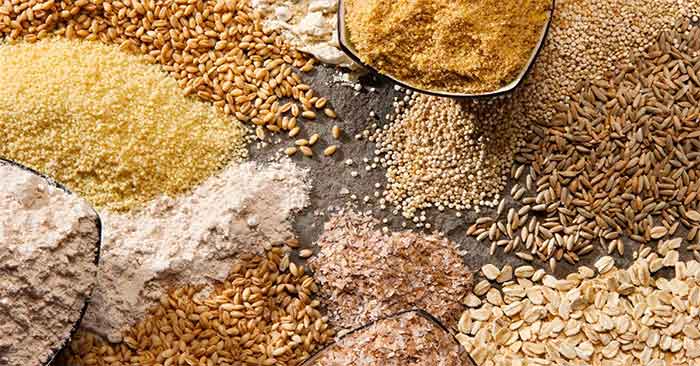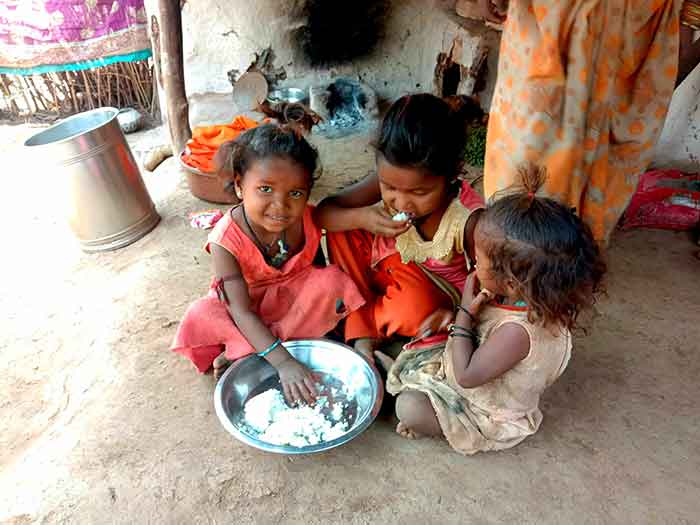
The Green Revolution greatly increased the country’s food production; But due to this, the farmers started to turn more towards cash crops than conventional crops. For the last few years, the farmers have been greatly affected by the global climate change. In the name of ‘modern lifestyle’, the dietary habits of many people have changed.
It is very important to know their importance in the diet and use them in the daily diet. For this it is necessary to impress the benefits of this grain on the minds of the masses at various levels. The characteristics of coarse grain crops are that they are grown in arid and semi-arid areas under low rainfall conditions. These climate-adapted crops are restricted to semi-arid climates in India. Adaptable to a wide range of temperature, humidity and local conditions, these crops provide food for millions of dry land farmers, feed for livestock, an important raw material for alcohol production and starch production for industrialized countries. In the Indian subcontinent, coarse grain crops are considered to be superior grains with rich nutrient stores. All types of whole grains are rich in antioxidants and are gluten-free and non-allergenic. As a result, there has been a gradual change in dietary patterns in recent times and increasing consumer demand is creating a potential market for this whole grain.
With an aim to highlight the nutritional quality of whole grains on the global stage, 2023 has been declared as the ‘International Year of Whole Grains’ by the United Nations General Assembly on India’s initiative. Undoubtedly, food is a necessity of life but good health also requires a balanced diet of various nutrients. It is no exaggeration to call whole grains a ‘powerhouse of nutrition’ in terms of nutritional quality.Coarse grains include sorghum, millet, amaranth, kutki,sorghum, gram, barley, amaranth, kuri, kang, batti,, ragi etc. Crops fall under this category.
Research into historical context shows that during the development of human civilization, the cultivation of agriculture started with only coarse grains. Evidence of their origin has also been found during the Indus Civilization period of 3000 BC. Today, millet is cultivated in 131 countries of the world. Coarse grains are the traditional food of about 590 million people in Asian and African countries. India accounts for 20 percent of their global production, while at the Asian level the share is 80 percent. Although whole grains have been considered a poor man’s food, many studies on their quality have proven that whole grains are no match for nutrition.
According to a 10-year study of women at the Harvard Institute, it was found that women who consumed 35 to 50 grams of whole grains in their diet per day had a 30 percent lower risk of heart attack and death from cardiovascular diseases. At the same time, an 18-year study of 1.6 million women found that women who ate an average of 50 grams of whole grains per day had a 30 percent reduction in the risk of type-2 diabetes. Similarly, after a 5-year study of 5 lakh women and men, it was concluded that eating whole grains reduces the risk of colon cancer by 21 percent, because the fiber it contains keeps the intestines healthy. According to the Mayo Clinic, whole grains not only lower bad cholesterol and increase good cholesterol, but also help balance insulin levels and control blood pressure. According to the Whole Grains Council, consuming 50 grams or more of whole grains or products made from them per day reduces the risk of many serious diseases. According to the Heart Foundation, it is considered most beneficial to consume it with breakfast,Sprouted gram in coarse grain form is beneficial from every point of view. Millet is a major source of calcium, protein, iron and magnesium. Sorghum is gluten free, contains mainly phosphorus, magnesium, riboflavin. Vitamin B-2, B-6, zinc and magnesium are abundant in amaranth. Ragi is rich in iron and calcium. In terms of agriculture, they can also be called farmer-friendly crops. These grains are able to withstand adverse conditions like water scarcity, disease etc. They are easy to store and store and remain in useful condition for a long time.
Millet, which accounts for 40 percent of the Indian diet, despite its many benefits, has lagged behind in becoming part of the common Indian plate since the Green Revolution, the survey revealed. They were replaced by wheat and rice. A survey conducted in villages and towns a decade ago revealed that less than 10 percent of the population showed interest in eating whole grains.
In 2018, they were given the status of ‘nutritional grain’ by the Government of India, promoting coarse grain farming. 154 developed varieties were developed, which were better in terms of productivity and better able to fight diseases. Nutritious whole grains were also made a part of the Central Government’s Mid-Day Meal Scheme.
Low-cost production of bulk food grains can certainly be a boon to small farmers, as long as they increase their participation in government procurement and ensure procurement at a minimum support price. Along with this, more emphasis has to be laid on the development and improvement of quality of good varieties. Scientific treatment and guarantee of fair price will certainly encourage farmers to produce bulk grains.Although its export is also being looked into by taking initiative in this direction, if there is enough public awareness along with meaningful efforts, a large market can be developed at the international level. This will not only strengthen the world-class nutrition campaign, but also strengthen the financial position of farmers.
Vikas Parasharam Meshram is a journalist
















































